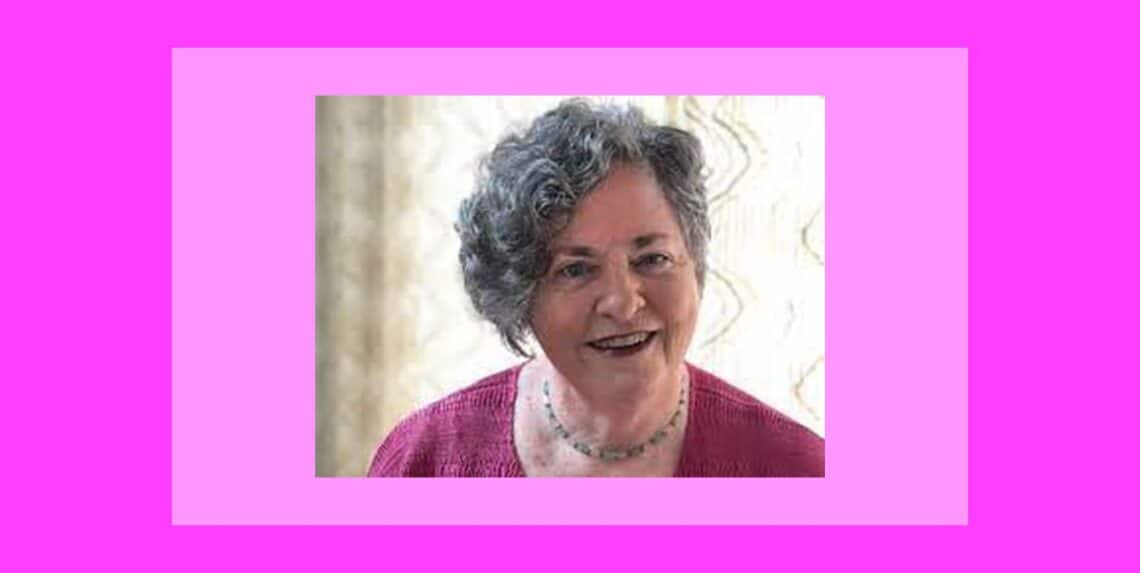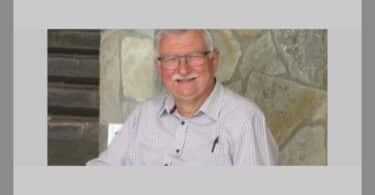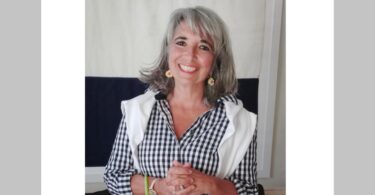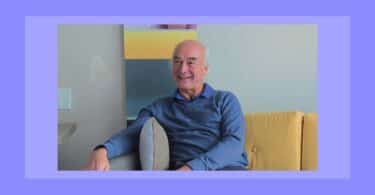Patricia Hatherly is immediate Past President of the Australian Homoeopathic Association and clinical supervisor/ lecturer in Materia Medica, at the Brisbane campus of Endeavour College of Natural Medicine.
A: So Patricia, tell me where do you think we are at in homoeopathy around the world at the moment.
P: Do you mean Australia or the world?
A: Let’s start with Australia in the meantime.
P: I think we are at a crossroads.
A: I think you are right.
P: When I was travelling a couple of years ago I got the distinct impression that we are at the forefront of education, mainly because we have competencies and there are lots of things in place here. The students have a good sense of place here; and what I mean by that is that they come out with a formal qualification which enables them to practice. Theoretically, then, no one can take pot shots at them, or dismiss them. It’s like anyone who studies, be it engineering or accounting or, whatever. Whether it be here or overseas it is the same. It’s a good feeling to have a legitimate qualification!
I think in that sense we are well ahead of the others. And this seems to be a good position, for us to be able to take natural medicine to the world. As I understand it, this is the direction Endeavour is taking. I don’t know how that will pan out, and it worries me somewhat because of the master/apprentice relationship that is an important part of homeopathic teaching. How will that pan out in the future, especially with the emphasis being on electronic learning and digital delivery? How you can get any interactive relationship if it’s all done online? I guess if the technology is really good and interactive then maybe it’s possible. But then there is the clinical stuff. You really need to have face to face consultations in order to demonstrate the Law of Cure. If all the clinical aspects as well as the philosophy and materia medica aspects are to be done online, well, it’s much harder to do that; so I have some reservations about online delivery.
A: Poor quality face-to-face teaching is the same as poor quality distance teaching and learning. Recently I went to the conference in Belgium- the ECCH. There was lots of talk about online learning and everyone is running towards it. But it sounds like you have reservations about it?
P: Well I do have reservations as I mentioned, but I accept that it’s also the way of the future. The important thing is to keep the endgame in mind. And that is about preparing people who are capable of being confident and competent prescribers. As far as the philosophy, materia medica and health science teachings, I’m sure these are aspects of our courses that are able to be delivered competently online. But the clinical aspect, I have some concerns about.
A: What do you mean by the master/apprentice relationship?
P: Well I think that everyone’s clinical experience is valid and the more clinical experience you have, the more responsibility you have to share by writing and teaching. In the classroom you get questions which allow you to meander through a case when you can tell a story, and students love that. It makes what they have been learning come alive.
A: It really comes down to resources and the creativity of what you are able to do online, because essentially all of those concerns that you have mentioned, to my way of thinking can be addressed if the willingness is there and the intention is there.
P: In the virtual classroom it should be fine especially those voice activated tutorial situations and good PowerPoints. I gave a paper at a really good conference in cyberspace in May. I did it from my computer in Brisbane at six o’clock in the morning, and it went to over 800 people all around the world. There were 30 presenters world-wide, with each of us presenting in turn over a 48 hour period from wherever we lived or worked. It was absolutely phenomenal. Mine was a half-hour presentation. Having previously sent in my PowerPoint slides, I entered a virtual seminar room and activated the slides from home. The participants could hear my voice and watch the slides and I was able to answer questions afterwards, just like in a real seminar. For the next six weeks anyone who was involved in the conference could go into any of the classrooms, download the presentation and watch it again. This was for a lactation conference.
A: 800 people is amazing.
P: We should get more Internet savvy when offering CPD to our colleagues, as numbers attending seminars are down everywhere. I have been on the case of the AHA for ages about this particular point. Because of the vast distances here and difficulties people upcountry have in getting to the city, we need to do things differently….. people want it cheap and they want it quick.
A: So why else are we at the crossroads? Colleges in the UK are shutting down.
P: Well it appears that, as a profession, they didn’t get their act together. Unlike us, they didn’t have a HIRG (Homoeopathic Industry Reference Group) and couldn’t bury the hatchet and work towards something like we did here.
A: The US is chaotic and the UK is chaotic and from what I saw at the conference in Belgium, the levels of confidence we have and what we offer also seems to be streets ahead.
P: That was my impression also. I really take my hat off to the homoeopaths from 15 years ago who put differences aside and really did bury the hatchet and work together for the future of the profession. They sat around a table and buried their differences. Actually, it was in this room that we had one of the meetings and one of the sign offs for the competencies. I don’t remember half the names now, as I was newly graduated and not a player. All of the groups were here. I was on the fringes and seeing what they were doing. I saw everything that went on.
One big thing that we still have to do in Australia is get the homoeopathic competencies sorted in the naturopathic degrees. When the naturopathic competencies were written there was a homoeopathic section on First Aid prescribing. There is one line in it that says “and are able to prescribe mixtures according to naturopathic principles”. In the last round of competencies, ratification HIRG really fought to get that placed in another section of the naturopathic competencies, but they refused. In fact, the competencies of the naturopaths and the homoeopaths nearly fell over on that one basic issue.
A: Is this wrong or inappropriate if they are studying naturopathy? Does it really matter? Do we want them to be using homoeopathic remedies or do we want them to be homoeopaths?
P: The use of mixtures is very vexed and is the fundamental difference between homoeopathic and allopathic thought when prescribing potentised medicines.
A: It is unique and strange that naturopathy holds such sway here. Recently I was at a conference of integrative medicine in Malaysia and there were delegates from all over the Pacific and from Asia and the Middle East. There were hundreds of Chinese medicine practitioners and homoeopaths and the like and not one naturopath. It was really refreshing!
P: I think that naturopathy will eventually get taken over by the doctors in this country. To me that’s a natural progression with all of the degrees that are coming out, that naturopathy will move more towards the medical profession. Doctors will be moving more towards using nutrition and prescribing supplements and assisting the patients in that way. That won’t be a bad thing.
A: So where does that leave us, because our degree is loaded up with all of these bio-sciences?
P: I think it’s crucial that our students understand pathology and physiology. We need to understand what it is that needs curing.
A: So what are you working on these days? What projects have you got underway?
P: Well I am working on finishing my second book at the moment. It’s a materia medica and repertory of the 20 Lac provings. It will hopefully be out at the end of the year. That is, if doing the repertory doesn’t do my head in.
A: So you’re creating a repertory from those materia medica and proving suggestions?
P: Yes; one of the things that irks me the most as a teacher of materia medica, and as a clinician, is that not everything in the materia medica is in the repertory. So I stress to students the importance of having materia medica rubrics in your head, as you can’t always rely on something being in the repertory. I have gone back to all of the provings and looked at everything. I’m attempting to cross-reference the material. For example in Lac-h there’s a Dream: “ruins, forts of”, I’m going to place it in Ruins and in Forts, for ease of searching. Because I have been working for five years on this project and know the material really intimately, doing this manually is working out OK but it’s time-consuming.
A: Are you working with the software companies Frederic, Roger, Dale?
P: Yes they have been very helpful, especially Roger who doesn’t mind me asking questions.
A: So the Lac family is now up to 20 members?
P: There are 20 milks that have had provings and there are a couple of others like Lac Primatum that are in use. And there is a Norwegian proving of Moose’s milk which is not yet translated into English. Recently I was contacted by a colleague in Israel who let me know that they’d done a proving of Lac Dromedary in Hebrew and the material is very similar to that brought out in the two provings done in Canada by Nadia Bakir and Mirsada Vins. Such corroboration, especially in another language, is very exciting. The material will be worked in with the original provings to give emphasis.
And I’m so excited about Lac Macropus, which we did here in Australia last year. Its story seems to be about the Dreamtime and our first people’s anguish over losing their land. It’s all there; the aboriginal history of their connection to the land. It’s there in the milk of our premier marsupial. It contains the energy of the history of the continent; it’s just amazing.
A: Having done provings and having done the conversion of many provings to repertory, it is easily the least interesting part for me. I mean you can have one sentence of a proving journal that translates to a least 10 rubrics.
P: I have the head for it. That’s right, I love it. However I understand what you are saying and the need for care. Translating some of the proving material into rubrics is challenging. For example in the proving of Lac Asinum which was done by Chetna Shukla in India, there is a tricky dream of “scantily clad Chinese women”. How was this to be translated? Foreign women? Asian women? Exotic girls? I need to know how the Indians look at the Chinese. There are all of these cultural dilemmas, and my decision on how to word this may prove to be incorrect. I opted for “foreign”!
A: That is an enormous task. I am in admiration.
P: I love doing it. I am enjoying doing it.
A: Don’t get too excited because no one buys proving books!!! We have to look with a critical eye on all provings, both the old ones from Hahnemann’s era and some of the more modern ones also. What do you say to the students when they are looking at a rubric that comes from a proving that you have some reservations about?
P: Well I just give my opinion, it’s as simple as that. Just going back to some of the milk/breastfeeding rubrics is a good example. Such rubrics as : “milk tastes bad,” or “baby refuses mother’s milk”. I look at those with a jaundiced eye. Babies don’t refuse mother’s milk. It is a natural instinct to go to the breast. But if the mother has had a lot of dairy then the baby who is tubercular might have an apnoeic episode during feeding and will pull off the breast. I think that we need to revisit some of the old rubrics and look at them from the perspective of modern science, and maybe to shine the torch on those inconsistencies. But having said that, I never thought that I would have cause to use “breast milk stringy” in a repertorisation and I did….once! You only need to see one case and then it’s a great rubric. It’s so exciting when our patients use the very words that are in our books. We may wonder how it is possible that a very elegant picture of materia medica can be sitting in front of you. It just goes to show that it doesn’t matter what nationality they are, or the background. We’re all the same underneath.
A: So you’re writing and you are teaching? Still teaching seminars?
P: Not so much. I am not so keen on travelling now that I have grandchildren. Instead, I am bringing out a newsletter and sending it all around the world so I can teach from a different perspective. There you go; I’m being Internet savvy and I can use the technology that we have at our disposal for my teaching needs. I don’t need to travel so much anymore in order to get my message out. People don’t have a lot of money to come to seminars anymore and seminar numbers are down. We live in tough economic times.
A: And from a political point of view are you involved still?
P: Not any more. I am the Immediate Past President of AHA’s National Council but no longer on the local committee. When I was a student here, I got involved and the AHA. It was in many respects my baby and I was on the committee seemingly forever. It’s time to move on and let the new graduates make of their professional association what they will. Only recently I finished with National Council, but I’m currently co-opted to represent the AHA on the ICH. I am excited about its formulation as the WHO will only talk to a truly international body and it’s a means for us, as a profession, to sit at the legislative table. And with the truly international committees that the ICH has established in education, much good will come from that. I’m sure.
A: I was impressed at the ECCH conference at all the fresh faces from Denmark, Holland and Israel and I think a lot will get done especially with these new faces and folks.
P: Yes, in some countries, they still seem so caught up in tradition and antiquity and I cannot see them moving on like we did here. We are so much more pragmatic and practical here in this country. It’s our history, being thrown together as convicts and being made to ‘make do’. And I think we read the wind quite well here. Just because things are being done like this before doesn’t mean that’s how they will prevail, we have to move, and move on.
A: One of the things I’ve been observing for years in my practice is the growing number of clients who were relying on multiple interventions, in multiple modalities and lots of different styles of medicines to effect a cure. They clearly see me as just another member of their team.
P: Yes this is a picture of practice now and it is very difficult to ‘own’ a cure. Part of that is that the patient is in charge of it, it’s their journey, and we are just part of the journey. I don’t think we can get too het up about that. We just have to know what they’re doing and perhaps appreciate how some of those other modalities will impinge upon what we’re doing.
A: One of the things that is so obvious about your work is that you do teach from an expert model, homoeopathy being taught from best practice.
P: Yes this is very important for me. I want to get those students to get to where the brain acts like a computer. I don’t want them to rely on a computer, but I want them to know those medicines in their heads. I want students to be able to take the case, and be able to instantly recognise that a particular remedy is in an important rubric. Ideally I want students to get to that point. In that regard it’s been a great privilege to teach, as being a teacher affords you the opportunity to learn things twice. I finished here in 1994 and I started teaching pretty quickly after that, as I come from a background of teaching. I want students to really know their stuff and own it. I think that getting the computer to repertorise for you can make you lazy so I don’t recommend it for learning to repertorise. It can be a case of rubbish-in/rubbish out. I like to use an eliminating rubric as it allows the student to perceive what needs curing. I like to see students understanding that, and if they can get that right, then the other stuff falls into place. A lot of them use mental symptoms as an eliminating rubric, but that it is so subjective and I think it’s fraught with peril. A rare and peculiar symptom is really what you want as your eliminator. We need to emphasize physical generals more highly.
A: I look at the demographic at our college and that tends to be a female aged 28. I first saw a computer when I was 18, but these students first saw a computer when they were three. I wonder how this will effect how we need to deliver information to students, the young ones in particular. Here we are giving our students Kent’s repertory with that ridiculous picture on the front.
P: I use Murphy. (Laughter)
A: I wonder if we’re losing votes with some of the younger students.
P: I really don’t think so, because when you look at it we don’t have so many school leavers or 20 year olds in our classes. We have some but not many. What we have are people who are on a journey. We do have quaint and antiquated ways of expressing ourselves, which I don’t think we can change now because they are locked in. So we have to stay with that. I think everyone’s experience is valid, especially Kent’s!. We can’t throw the baby out with the bath water; we have to add to what we have. We have to teach people how to take the case and tease specific aspects out. I would prefer at the beginning of their clinical training, that they don’t rely on a computer. They can do it towards the end but not at the beginning. When you use books such as a repertory, quite often when you’re scanning a page, you can pick up another rubric which seems to be a better fit. But when you’re working on a computer screen you actually have to know what is the thing you’re looking for and what you want to bring out. Also I find in a clinical situation that patients don’t like me having a computer on my desk. You can always go to another room later on and check or look something up. So, I’m not totally anti-computers. I have all of the programs and I think they’re wonderful for research and especially they’re great for some modern material.
A: Certainly if our outcome is to create a confident and competent student then how are we doing?
P: I think we are doing okay. Since teaching clinic in the last few years I can say that with confidence, as students often contact me after they have left with their difficult cases. So I get to do some unofficial monitoring and I think we’re doing okay. We need to keep in mind that at the end of the day, it’s the patient’s choice as to where they go and what they do. You are not in charge of a patient, it’s their choice. Many homoeopaths think that they know best but, in reality, we’re just a cog in the big healing wheel.
A: So are there times that you are using other methods beyond the original source books?
P: Yes I use Scholten and the Sensation method. Well, if someone comes in and uses the word “stuck” several times in the first few minutes I’m already thinking Anacardacaea! However as a teacher I think that these are methods which students need to come into contact with perhaps in the fourth year. They need to be able to take a good Hahnemannian case and then use some of these other methods at a later time. I have had some amazing successes using both of those new methods. But as a teacher you have a responsibility. The students need to start with the source books and then they need to crawl and walk before they can run, and then one day they can fly. You need to learn the basics first.
A: It’s refreshing to hear you say that. I think we are all of the same opinion that the building blocks are just so crucial before some of these ideas are introduced, perhaps at the postgraduate level.
P: Yes exactly; you have to have good practical prescribing skills. You need to know what to give to a lactating mother or a toddler with a middle ear infection but also when to delve deeply. My practice is full of all sorts of people. Sometimes after the initial case-taking people tell me it’s like being shriven; like having gone to confession and received absolution. Patients sometimes say that the telling of their story affords them a perspective on their lives that is new and meaningful to them, and they are thankful for that. I think that taking someone’s case is a great responsibility and a great privilege.
A: Can’t agree more. Patricia it’s been a pleasure. Thanks so much.
—————————————–
Patricia Hatherly (BA DipEd BHSc (Hom) IBCLC AROH reg’d MAHA ALCA ANPA) Patricia has been at the forefront of homoeopathic education, practice, and politics for 16 years. She is a registered classical homeopath and naturopath who for 15 years has run a busy practice in the western suburbs of Brisbane. She spent over 30 years working with families (particularly mothers and babies) as a Lactation Consultant, Childbirth Educator and Parent Effectiveness Instructor. Patricia is a clinical supervisor and lecturer in Materia Medica, at the Brisbane campus of Endeavour College of Natural Medicine. She is the Immediate Past President of the Australian Homoeopathic Association and is the author of The Homeopathic Physician’s Guide to Lactation.
# # #





